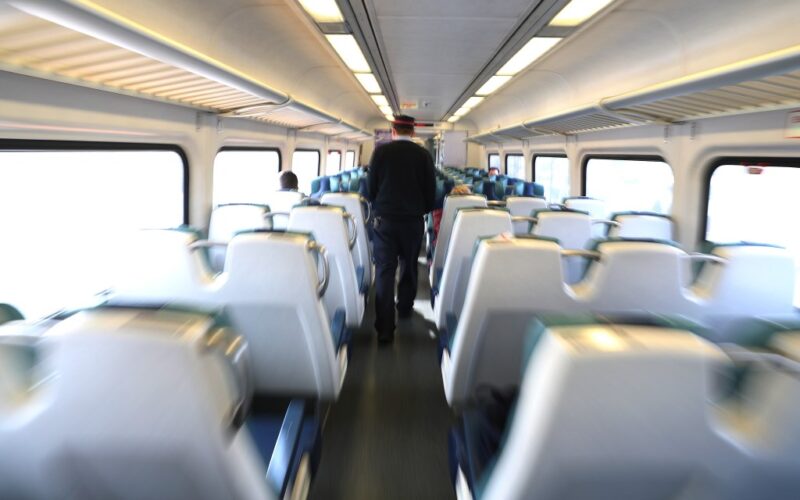Unions representing nearly half of the Long Island Railroad workforce are on track for a potential strike following a breakdown in contract negotiations
Without an intervention from the White House, the LIRR could see its first work stoppage event in nearly 30 years, as early as next month.
In 1994, there was a three-day strike that saw workers walk out on a Friday, with a resolution reached before the Monday morning commute. And in 2014, workers came within days of striking, a plan prompted by disagreements over wage increases, but a last-minute settlement was reached before it began.
With the threat of a potential strike once again looming over the Long Island Railroad, here’s a look at how we got here, and what could happen next:
Who?
There are five union groups, collectively known as the Long Island Railroad Bargaining Coalition, locked in a contract dispute with its parent company, the Metropolitan Transportation Authority. It is made up of the Brotherhood of Locomotive Engineers and Trainmen, the Brotherhood of Railroad Signalmen, the International Brotherhood of Electrical Workers, the Transportation Communications Union and the International Association of Machinists and Aerospace Workers.
Spurred by disagreement over the terms of their latest contract, the coalition of unions — which represents some 1,300 LIRR union workers — parted ways with the railroad’s largest union, the International Association of Sheet Metal, Air, Rail and Transportation Workers (SMART) in 2023. Before that, it was typical for the various unions to negotiate contracts together.
Why?
The breakaway unions believe they can achieve a better deal than the one ultimately accepted by other MTA labor organizations, including unions representing the rest of the LIRR workers. It comes with a 9.5% pay raise over three years, a figure decried by union officials, who have cited inflation and the high cost of living in the city.
The LIRR Bargaining Coalition has alternatively called for raises more on par with those other major U.S. railroads, like Amtrak and Philadelphia’s Southeastern Pennsylvania Transportation Authority, have offered workers in recent years.
“At its core, the dispute comes down to this: the LIRR expects members to accept general wage increases that fail to keep pace with the cost of living, even as the Carrier’s financial outlook improve,” Brotherhood of Railroad Signalmen explained.
“Thanks to New York’s congestion pricing program, the LIRR has significantly increased funding and ridership, with passenger levels now approaching pre-pandemic numbers,” it continued. Additionally, because of the hard work performed daily by its union workforce, LIRR is setting new records for on-time performance.”
What’s happened so far?
Upon breaking rank, the group of unions took their case to the National Mediation Board, a federal agency that manages railway and airline workforce issues. After overseeing negotiations for more than a year, the board concluded earlier this month that the two sides are “unable to reach a voluntary settlement,” union leaders wrote in a letter to members, which was obtained by Newsday.
Officials further noted they would reject MTA’s binding arbitration offer, a move that triggered a mandatory 30-day “cooling-off” period under federal labor law.
Union leaders have “been working steadfastly to reach a fair and equitable agreement with [LIRR management] — one that at the very least maintains real wages and aligns with industry standards for the period under negotiation,” the letter continued.
“Unfortunately, the Long Island Rail Road remains firmly opposed to such terms.”
What’s next?
Once the “cooling-off” period ends, parties on either side of the negotiation, or Gov. Kathy Hochul, can request White House intervention, which would trigger the appointment of a “Presidential Emergency Board.” The panel of mediators, selected by the Trump administration, would oversee further contract talks and issue nonbinding recommendations to resolve the dispute, a process, which could take up to six months.
If no resolution is reached, federal law allows for a second Presidential Emergency Board to be established. In the event that too fails, a strike or lockout would be the next step.
If none of the parties requests White House intervention, the unions would be legally allowed to go on strike as early as next month, which could leave the LIRR’s 300,000 daily commuters contending with disrupted service, delays and the struggle of finding alternative methods of transportation.
When?
The “cooling-off” period began August 18, which means a strike could begin as early as Sept. 18.








